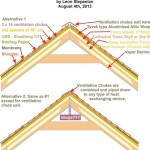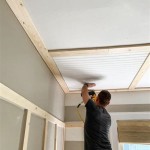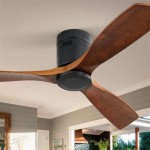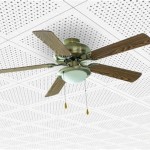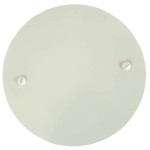How Many Blades Ceiling Fan
The number of blades on a ceiling fan can have a significant impact on its performance and aesthetics. While the optimal number of blades depends on various factors such as room size, ceiling height, and personal preference, understanding the advantages and disadvantages of different blade counts can help you make an informed decision.
Two-Blade Ceiling Fans
Two-blade ceiling fans offer a sleek and modern look. They are typically smaller in size and are suitable for small to medium-sized rooms. Advantages of two-blade ceiling fans include their low profile, which can create a more open and airy feel, and their ability to circulate air effectively even at lower speeds. However, two-blade fans may not be as efficient as fans with more blades at higher speeds.
Three-Blade Ceiling Fans
Three-blade ceiling fans are the most common type found in homes. They provide a good balance between performance and aesthetics. Three-blade fans are available in a wide range of styles and sizes, making them suitable for various room sizes and styles. They are generally more efficient than two-blade fans and can circulate air more effectively at higher speeds. However, three-blade fans may not be as energy-efficient as fans with more blades.
Four-Blade Ceiling Fans
Four-blade ceiling fans offer a wider blade span and increased airflow capacity compared to two-blade and three-blade fans. They are ideal for larger rooms and areas with high ceilings. Four-blade fans are highly efficient and can move a significant amount of air, making them a good choice for cooling large spaces. However, they may require more energy to operate than fans with fewer blades.
Five-Blade Ceiling Fans
Five-blade ceiling fans are less common but offer the highest airflow capacity and efficiency among the blade count options. They are suitable for very large rooms and industrial applications where maximum airflow is required. Five-blade fans are highly efficient and can move a large volume of air even at low speeds. However, they may be more expensive and require more energy to operate than fans with fewer blades.
Factors to Consider When Choosing the Number of Blades
- Room Size: Larger rooms require fans with more blades and a wider blade span to effectively circulate air.
- Ceiling Height: Rooms with high ceilings require fans with more blades and a longer downrod to ensure adequate air circulation.
- Personal Preference: The number of blades can also affect the aesthetics of the room. Some people prefer the sleek look of two-blade fans, while others prefer the fuller look of four-blade or five-blade fans.
- Energy Efficiency: Fans with more blades tend to be more energy-efficient at lower speeds, while fans with fewer blades may be more efficient at higher speeds.
By considering these factors, you can determine the optimal number of blades for your ceiling fan to achieve both effective airflow and the desired aesthetic appeal.

How Many Blades Should Your Ceiling Fan Have

How Many Blades Does Your Ceiling Fan Really Need Stewart Lighting

Ceiling Fan Size Guide How Many Blades To Cool Your Space

How Many Blades Are Best For Ceiling Fans Parrotuncle

What Is The Best Number Of Blades For A Ceiling Fan Delmarfans Com

How Many Blades Are Best For Your Ceiling Fan

How Many Blades Are Best For Ceiling Fans Parrotuncle

Maximizing Airflow How Many Ceiling Fan Blades Do You Need City Lights Sf

Does A Ceiling Fan S Performance Depend On The Number Of Blades Seion

What Is The Best Number Of Blades For A Ceiling Fan Delmarfans Com


